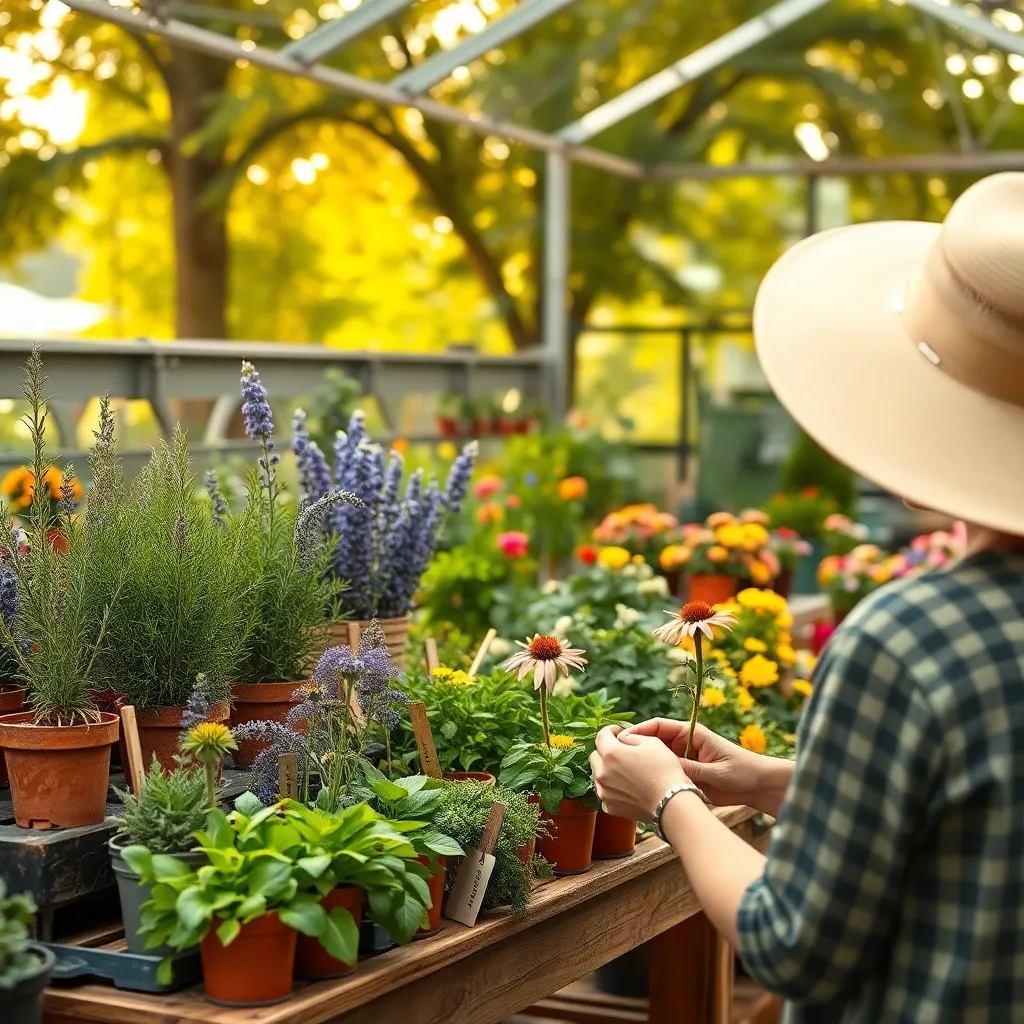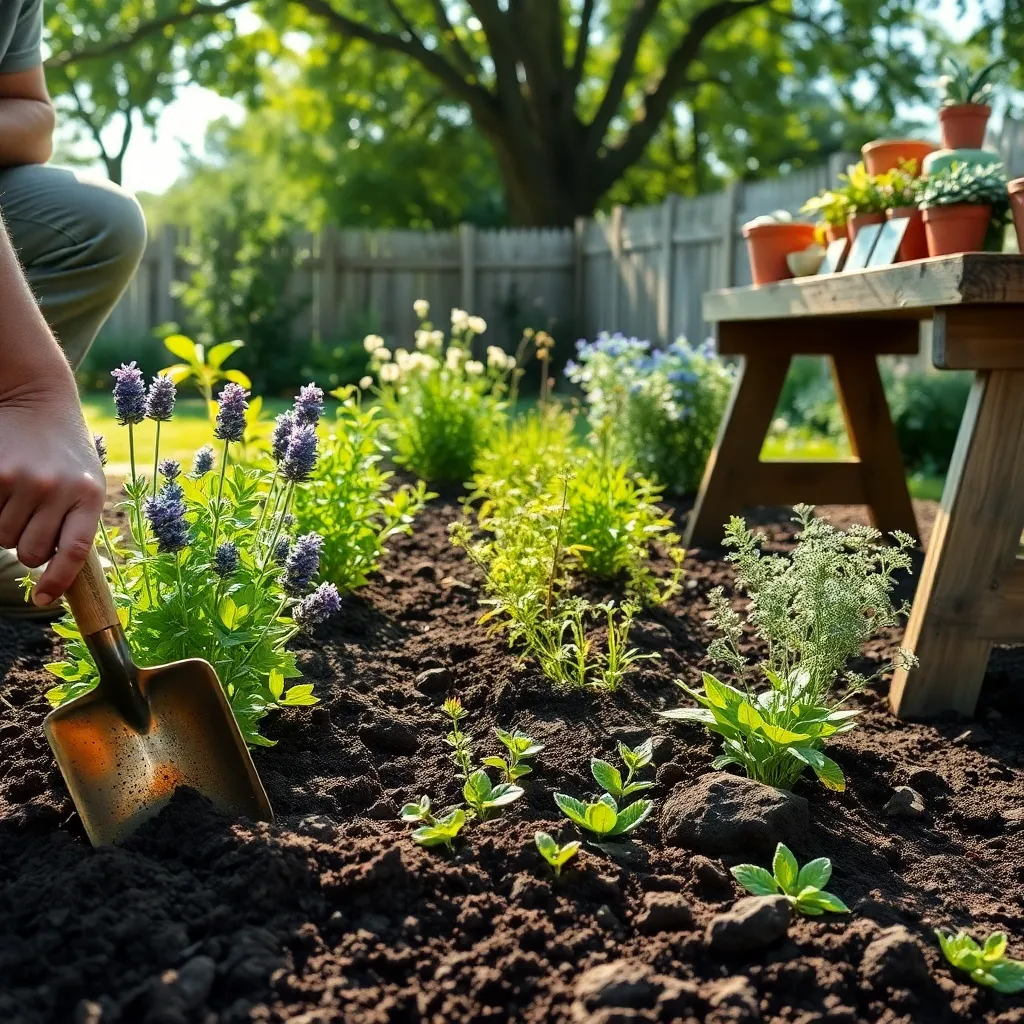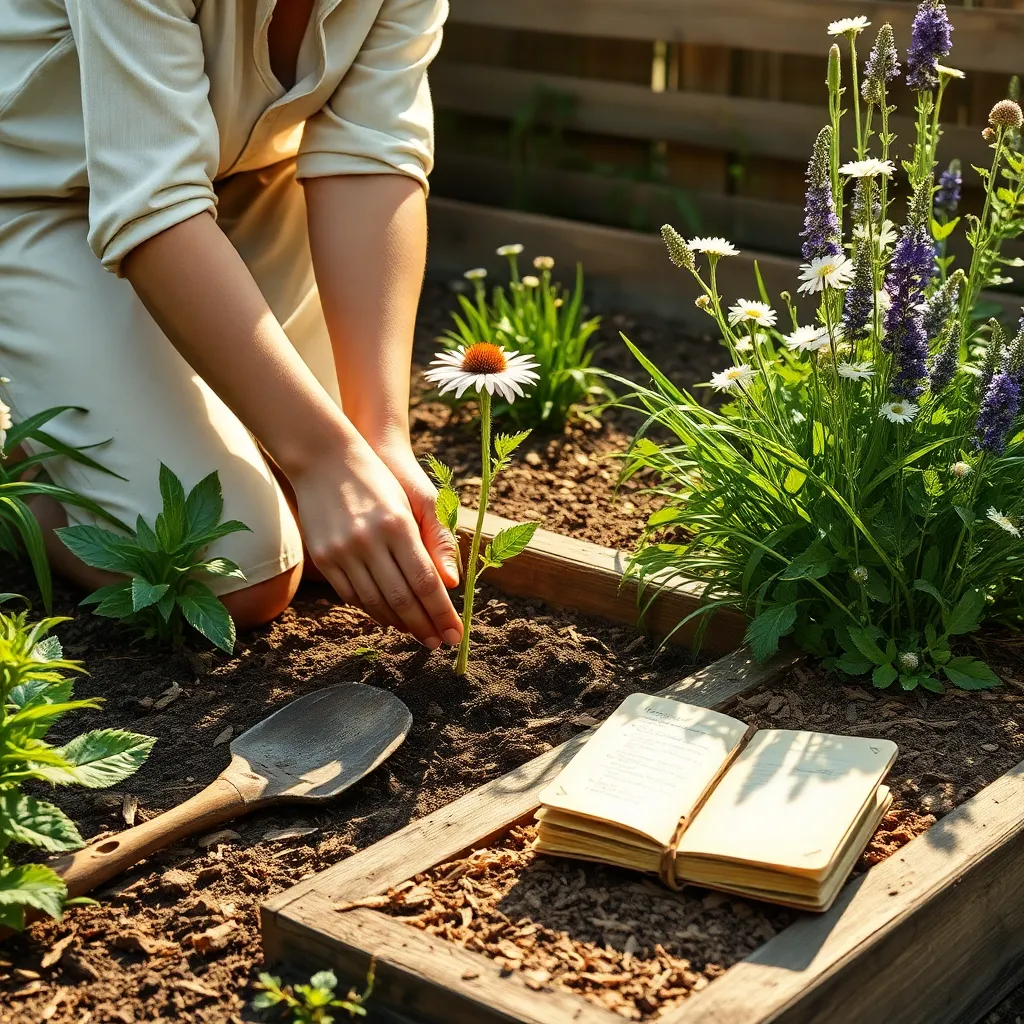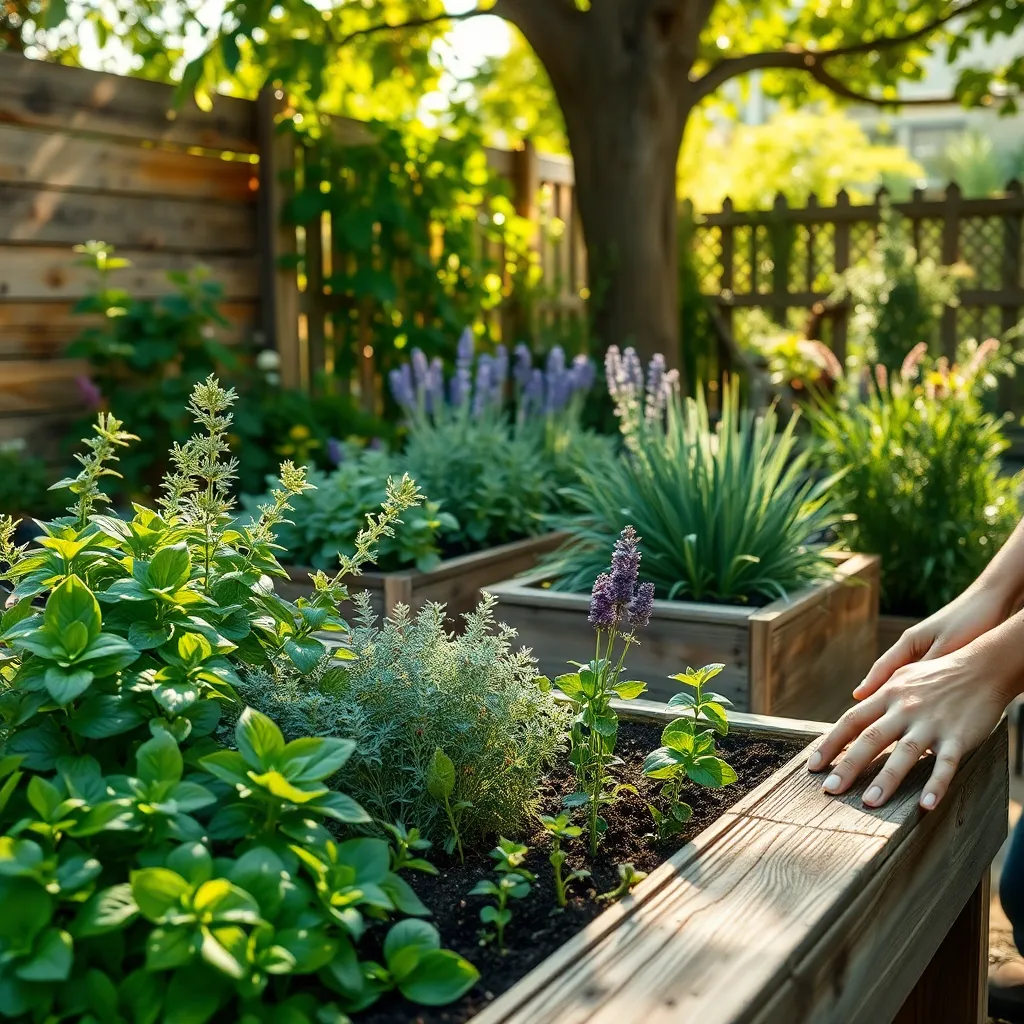Imagine stepping into your backyard and being greeted not only by the vibrant hues and scents of blossoming plants but also by your personal pharmacy of natural remedies. Whether you’re a seasoned gardener or just getting your hands dirty for the first time, cultivating medicinal plants at home offers a rewarding journey that bridges the gap between nature and wellness. As you nurture these plants, you’ll discover a world where the simplest leaf or flower can hold the potential to soothe a headache, calm a restless mind, or elevate your daily health routine.
In this article, we’ll guide you through the essentials of selecting and growing medicinal plants that thrive in backyard settings, catering to both novice and experienced green thumbs. You’ll learn how to choose the right plants for your climate, understand their unique care needs, and explore their incredible benefits. From learning how to create the ideal conditions for herbs like lavender and chamomile to understanding the healing properties of lesser-known plants, this guide is your companion in transforming your garden into a sanctuary of health and tranquility. So, let’s embark on this botanical adventure together, and watch as your backyard blooms into a haven of natural remedies and serene beauty.
Choosing Medicinal Plant Varieties

Choosing the right medicinal plant varieties for your backyard is essential to ensure a thriving garden. Start by assessing your local climate and soil conditions to select plants that will naturally thrive in your environment.
Consider well-known medicinal plants such as chamomile, echinacea, and lemon balm, which are relatively easy to grow. These plants typically require full sun and well-drained soil, making them suitable for many backyard conditions.
For beginners, starting with hardy plants like peppermint and calendula can be rewarding due to their resilience and minimal care requirements. Peppermint thrives in partial shade and moist soil, while calendula prefers a sunny spot with moderate watering.
Advanced gardeners might explore growing more challenging plants like ginseng or valerian, which require specific conditions. Ginseng needs a shaded area with rich, well-drained soil, and valerian prefers a sunny spot with consistently moist soil.
To ensure success, regularly monitor your plants for signs of stress or disease, adjusting care as needed. Mulching can help retain moisture and suppress weeds, providing a healthier growing environment for your medicinal plants.
Preparing Your Garden Bed

Before planting your chosen medicinal plant varieties, it’s essential to prepare your garden bed properly. Begin by selecting a well-drained area with adequate sunlight, as most medicinal plants thrive in these conditions.
Start by clearing the area of any weeds or debris to ensure your plants have ample space to grow. Use a hoe or a garden fork to loosen the soil to a depth of about 12 inches, which improves both drainage and root penetration.
Amend the soil with organic matter such as compost or well-rotted manure to enhance its fertility and structure. Adding a layer of organic mulch on top helps retain moisture and suppress weed growth, creating an optimal environment for your plants.
For those living in areas with heavy clay or sandy soils, consider building raised beds to improve drainage and control soil quality. Raised beds also make it easier to manage soil temperature, which is particularly beneficial for temperature-sensitive plants.
Optimal Planting Techniques

To ensure your medicinal plants thrive, selecting the right planting techniques is crucial. Begin by choosing a location that receives at least six hours of sunlight daily, as most medicinal plants, like echinacea and lavender, thrive in sunny spots.
Next, consider the soil requirements specific to your chosen plants. For instance, herbs like rosemary and thyme prefer well-drained, sandy soil, while marshmallow plants thrive in more moisture-retentive, loamy soil.
When planting seeds, follow the recommended depth and spacing guidelines found on seed packets. Typically, seeds should be planted at a depth twice their size, and spacing should allow for adequate air circulation to prevent diseases.
Implementing companion planting can enhance growth and deter pests naturally. Planting chamomile near other herbs can improve their flavor and health, while garlic acts as a natural pest deterrent when planted alongside medicinal plants.
Watering is another critical factor; most medicinal plants require consistent moisture but do not tolerate waterlogged conditions. A general rule is to water deeply once or twice a week, allowing the top inch of soil to dry out between watering sessions.
Caring for Healing Herbs

Caring for healing herbs in your backyard requires attention to their unique needs. To ensure optimal growth, focus on providing the right amount of sunlight and soil conditions specific to each herb.
Most medicinal herbs thrive in well-drained soil enriched with organic matter. Amending your soil with compost can improve its texture and fertility, supporting healthier plant development.
Watering is crucial, yet many healing herbs prefer drier conditions. It’s best to water deeply but infrequently, allowing the top inch of soil to dry out between watering sessions to prevent root rot.
Regular pruning encourages bushier growth and prevents herbs from becoming leggy. Snip off flowers as they appear to focus the plant’s energy on leaf production, which is where most medicinal properties are concentrated.
For gardeners looking to maximize the potency of their herbs, harvest them in the morning when essential oil concentrations are highest. Use sharp scissors or pruners to cut the stems cleanly, which helps the plant recover quickly.
Harvesting and Usage Tips

When it comes time to harvest your medicinal plants, timing is crucial to maximize their healing properties. Herbs like chamomile and lavender should be picked in the morning, just after the dew has evaporated but before the sun becomes too strong.
For leafy herbs such as basil or mint, gather the leaves just before the plant flowers for the best flavor and potency. Use sharp scissors or pruning shears to make clean cuts, which will help the plant continue to grow healthily.
Roots, such as those of echinacea or valerian, should be harvested in the fall after the plant’s energy has concentrated below ground. Dig carefully using a garden fork to avoid damaging the roots, and clean them thoroughly before use.
Once harvested, proper drying and storage are essential to preserve the medicinal qualities of your plants. Hang leafy herbs upside down in a dark, airy room to dry, which typically takes one to two weeks depending on humidity levels.
For roots, slice them into smaller pieces and use a dehydrator or a low-temperature oven to dry them completely. Store dried herbs in airtight glass containers, away from direct sunlight, to maintain their potency for up to a year.
Using your medicinal plants can be as simple as making teas, tinctures, or salves. For a basic herbal tea, steep one teaspoon of dried herbs in a cup of hot water for about ten minutes, and enjoy the soothing effects.
Advanced gardeners might explore making tinctures by soaking herbs in alcohol for several weeks to extract their benefits. Experiment with different combinations to create custom blends tailored to your health needs, and always consult with a healthcare provider when trying new remedies.
Conclusion: Growing Success with These Plants
In the journey of cultivating both medicinal plants and relationships, we’ve explored five key concepts: understanding each other’s needs, nurturing growth through consistent care, embracing diversity for a stronger bond, tackling challenges with patience, and celebrating the harvest of shared accomplishments. Just as tending to a garden requires dedication and love, so does nurturing a relationship.
To take your first step, consider dedicating a small space in your backyard as a shared project. Choose a few medicinal plants together and commit to caring for them as a team. This simple act can serve as a powerful metaphor for your relationship, reminding you both of the importance of mutual effort and time.
Bookmark this article as your go-to guide for future reference. It’s a resource that can illuminate your path to a healthier, more fulfilling partnership. As you cultivate your garden and relationship, remember that the seeds you plant today will blossom into tomorrow’s success. With dedication and love, your relationship can flourish, creating a harmonious and vibrant connection that stands the test of time.

